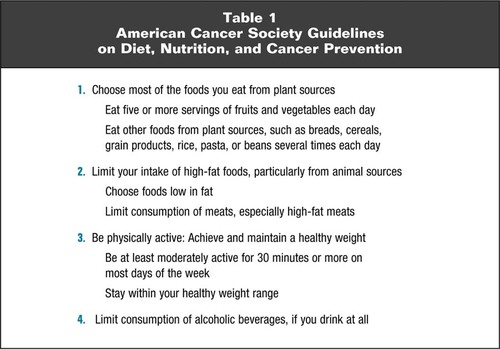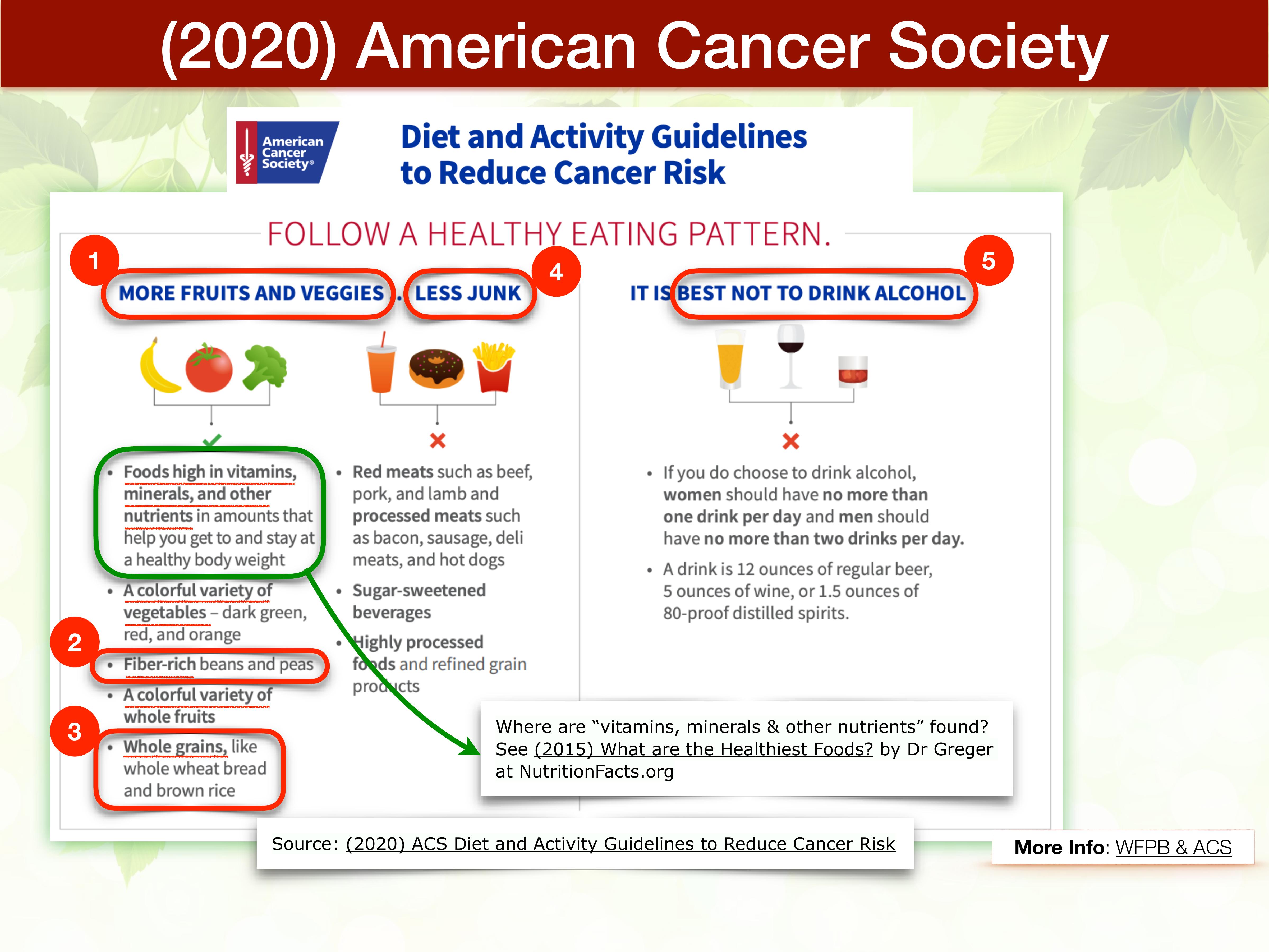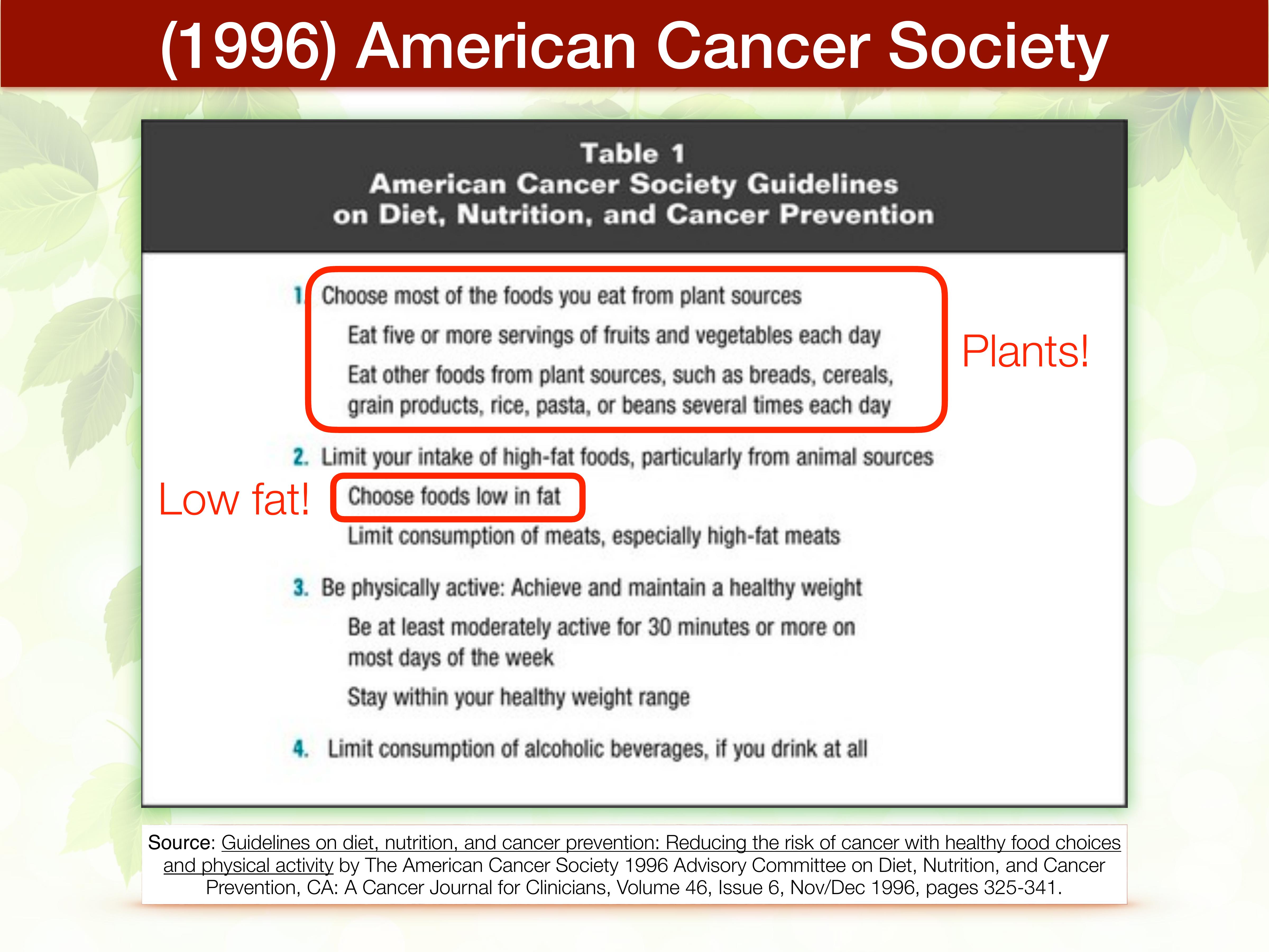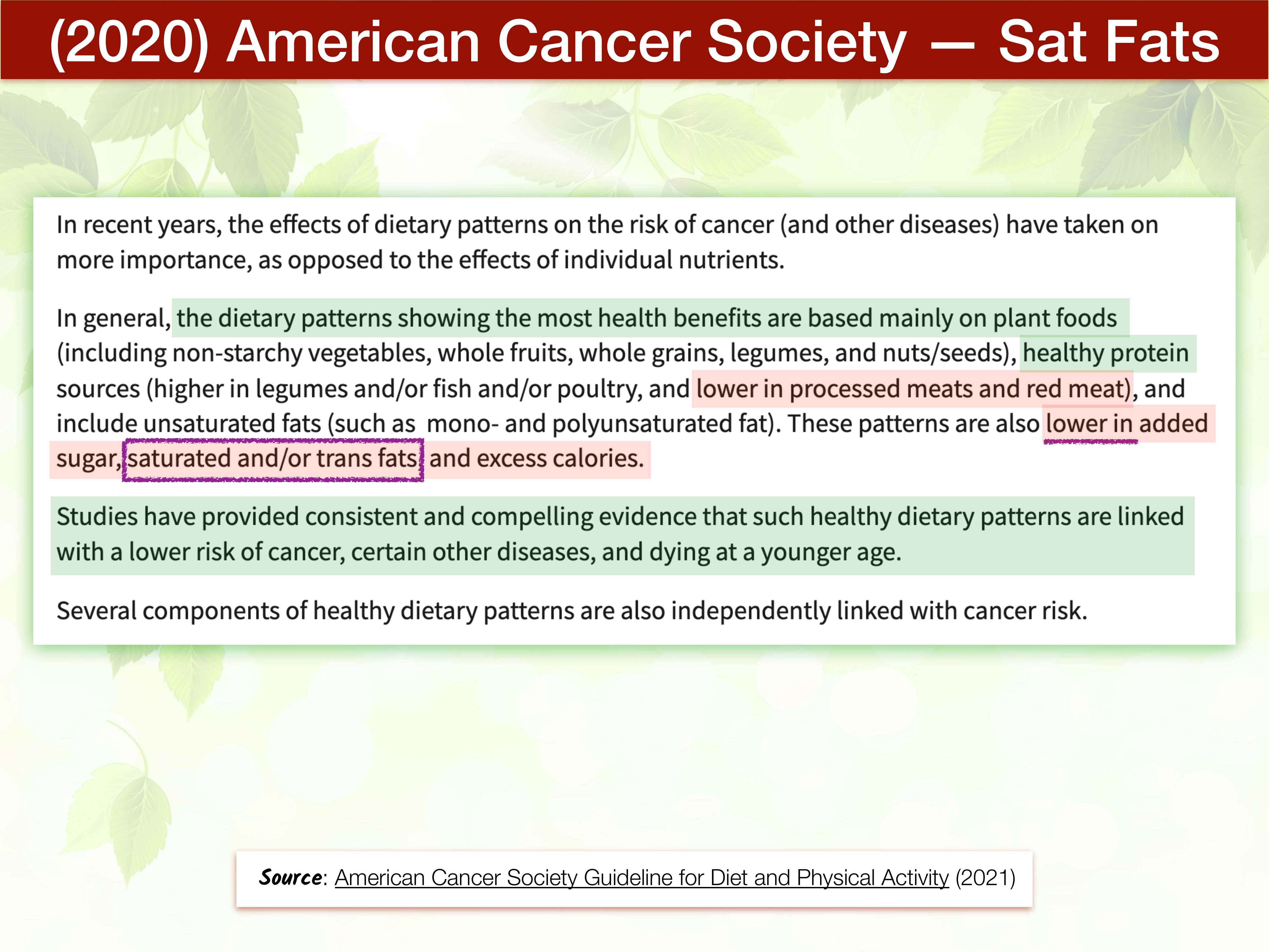American Cancer Society was founded in 1910; it was originally called the American Society for the Control of Cancer (ASCC). In 1945, the ASCC was reorganized as the American Cancer Society. What are their dietary guidelines?
In 2020, ACS published American Cancer Society Guideline for Diet and Physical Activity for Cancer Prevention. Table 1 says:
-
Achieve and maintain a healthy body weight throughout life.
- Keep body weight within the healthy range and avoid weight gain in adult life.
-
Be physically active.
- Adults should engage in 150-300 min of moderate-intensity physical activity per wk, or 75-150 min of vigorous-intensity physical activity, or an equivalent combination; achieving or exceeding the upper limit of 300 min is optimal.
- Children and adolescents should engage in at least 1 hr of moderate- or vigorous-intensity activity each day.
- Limit sedentary behavior, such as sitting, lying down, and watching television, and other forms of screen-based entertainment.
-
Follow a healthy eating pattern at all ages.
-
A healthy eating pattern includes:
- Foods that are high in nutrients in amounts that help achieve and maintain a healthy body weight;
- A variety of vegetables — dark green, red, and orange, fiber-rich legumes (beans and peas), and others;
- Fruits, especially whole fruits with a variety of colors; and
- Whole grains.
-
A healthy eating pattern limits or does not include:
- Red and processed meats;
- Sugar-sweetened beverages; or
- Highly processed foods and refined grain products.
-
A healthy eating pattern includes:
-
It is best not to drink alcohol.
- People who do choose to drink alcohol should limit their consumption to no more than 1 drink per day for women and 2 drinks per day for men.
Did ACS (American Cancer Society) advocate a plant-based diet way back in 1996? Yes!

Source: Guidelines on diet, nutrition, and cancer prevention: Reducing the risk of cancer with healthy food choices and physical activity by The American Cancer Society 1996 Advisory Committee on Diet, Nutrition, and Cancer Prevention, CA: A Cancer Journal for Clinicians, Volume 46, Issue 6, Nov/Dec 1996, pages 325-341.
In 1996, ACS also emphasized a Low Fat diet. WFPB guidelines are basically a tightening of the knobs outlined in the ACS guidelines below. Instead of "choose MOST of the foods you eat from plant sources", WFPB practitioners encourage "choose ALL of the foods you eat from plant sources." And let's remember the Low Fat guideline too. In other words, Low Fat WFPB is best for cancer prevention!
Fruits & Veggies: WHO, WCRF/AICR, AICR recommendations for fruits & veggies (only 5 servings daily) are wimpy when compared to WFPB guidelines. For example, Dr Greger's Daily Dozen (for a 1400-1600 calorie diet) recommends at least nine servings: Fruits (3 servings), Leafy Greens (2 servings), Berries (1 serving), Cruciferous Veggies (1 serving), Other Veggies (2 servings). If our caloric needs are more, we eat even more servings of fruits & veggies! Dr Kristi Runk's 14-component cancer prevention guidelines have a comparable number of Fruits & Veggies; it builds upon Dr Greger's Daily Dozen.
Low Fat: What does low fat mean? In some scientific circles, 25% (even 30%) fat is considered low fat. In WFPB circles, that's high fat. WFPB practitioners tighten the knobs for low fat to as little as 10% to 15%. And some doctors like Dr Peter Rogers and Dr McDougall tighten this knob even further by recommending only 5% to 7% total fat intake. For details, see The Emphasis on Low Fat.

 Instagram
Instagram YouTube
YouTube


